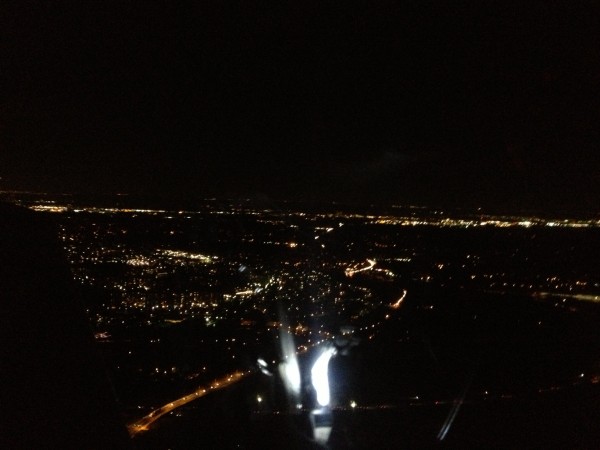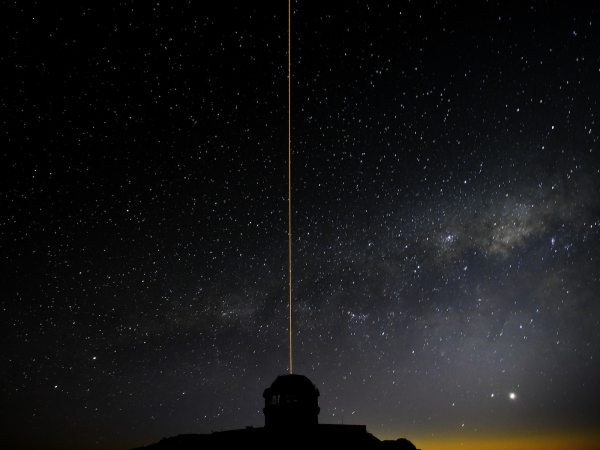“Don’t get involved in partial problems, but always take flight to where there is a free view over the whole single great problem, even if this view is still not a clear one.” -Ludwig Wittgenstein
You know how bad light pollution is for astronomy, and how hard we try to escape it. We search for the darkest skies possible, away from all man-made light sources. We try to get as high above the atmosphere to clear, stable air, we try and avoid the clouds and stay as far away from the Moon as possible.
You might think, "What better way to do that than from an airplane?" And yet, if you've ever been inside an airplane at night, you know that your astronomical views are... shall we say, very limited. Why is that?
 Image credit: Jill Tallman of AOPA, via http://blog.aopa.org/flighttraining/?tag=night-flight.
Image credit: Jill Tallman of AOPA, via http://blog.aopa.org/flighttraining/?tag=night-flight.
Come find out on this week's Ask Ethan!
- Log in to post comments


So if I had a light-proof hood that I could put against the airplane's wall, around the window, and could crawl under it (and let my eyes adjust) I'd be in for a treat?
Okay, someone Kickstart that product.
I've seen the northern lights over Greenland from an airplane. So it's possible to see things, even in the plane.
Best dark sky I ever saw was in northeast NC - between Elizabeth City and Edenton on highway 17.
My first time down there I'm driving down 17 and I notice nothing but darkness in my rear view and side view mirrors. So I pull off to the side of the road, get out of the car and what did I see.
Something I'd NEVER seen before - the arc of the Milky Way. and of course my camera at the time was 30 miles away from me. Been back a bunch of times but only that once did events conspire to grant me what to this day is my "Wow" view.
@ Dale #1
You have the general idea. But, no need to buy anything. A jumper, cardigan of density, a towel are all useful for that observation. All you would have to put up with is refraction, multiple reflections ( from multilayer perspex ) and the 'occasional' ice crystals forming on the inside of the outer layer of the panel. Other than that, it's fine viewing.
In 1965, as a young engineer working in the Flight Crew Support Division of NASA's Manned Spacecraft Center in Houston, one of my first assignments was to determine whether astronauts in orbit would be able "to see stars in the daytime". We did both ground and in-orbit experiments, and the general outcome was this: if there is ANYTHING in your visual field illuminated by direct sunlight, you will not see any stars, on ground or in orbit. This was true even for surfaces--such as the nose of a Gemini spacecraft--that had been painted flat black. A few years later, it turned out to be equally true on the Moon. You can see stars in the daytime in orbit with optical assistance, such as the Crew Optical Alignment Sight (COAS), IF you know where to point it for the brighter ones. This was a necessary capability in order to align the inertial platform during the Apollo missions.
Adding to #4, nighttime only.
Along the same line: why is that the NASA photos of earth from space and the Moon have no stars in them? I would have imagined our planet suspended in a dense sea of stars.
If the subject is in daylight, then the exposure time will be quite short. To reveal any stars takes a long time exposure to collect the amount of available light from those stars. For example, to capture the moon ( first quarter & depending on aperture) may take a quarter of a second (also depending on f/ratio, ISO, etc.) whereas a starshot (without the presence of the moon) may take several minutes exposure to gather enough light to get a glimmer of an image. This is considering a moderate lens of an 8" SCT, not a 200" Palomar telescope. Most digital astrophotographers today would take a bracket of 20 to 30 (or more) exposures, then stack them with special software to get a decent pic.